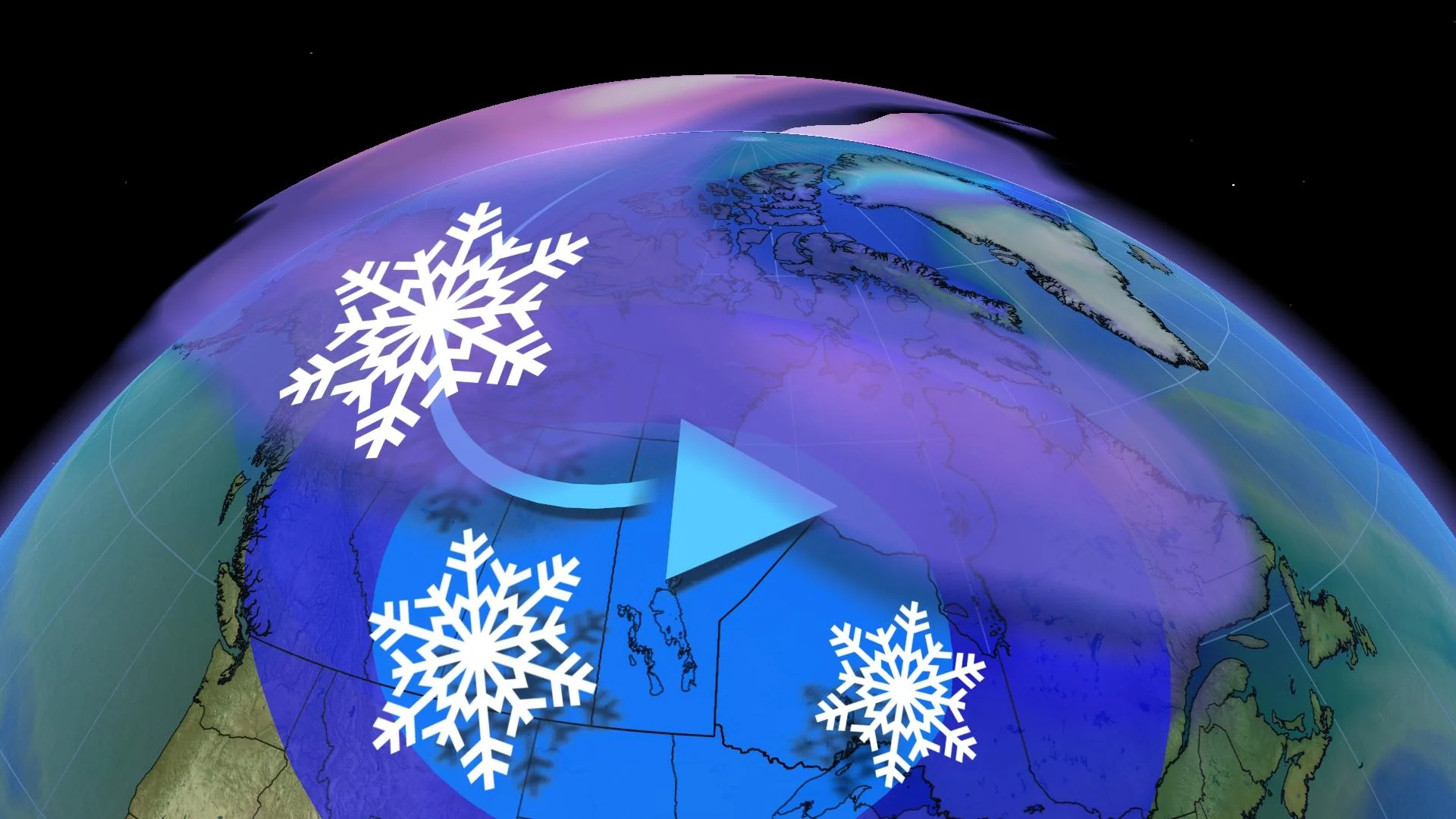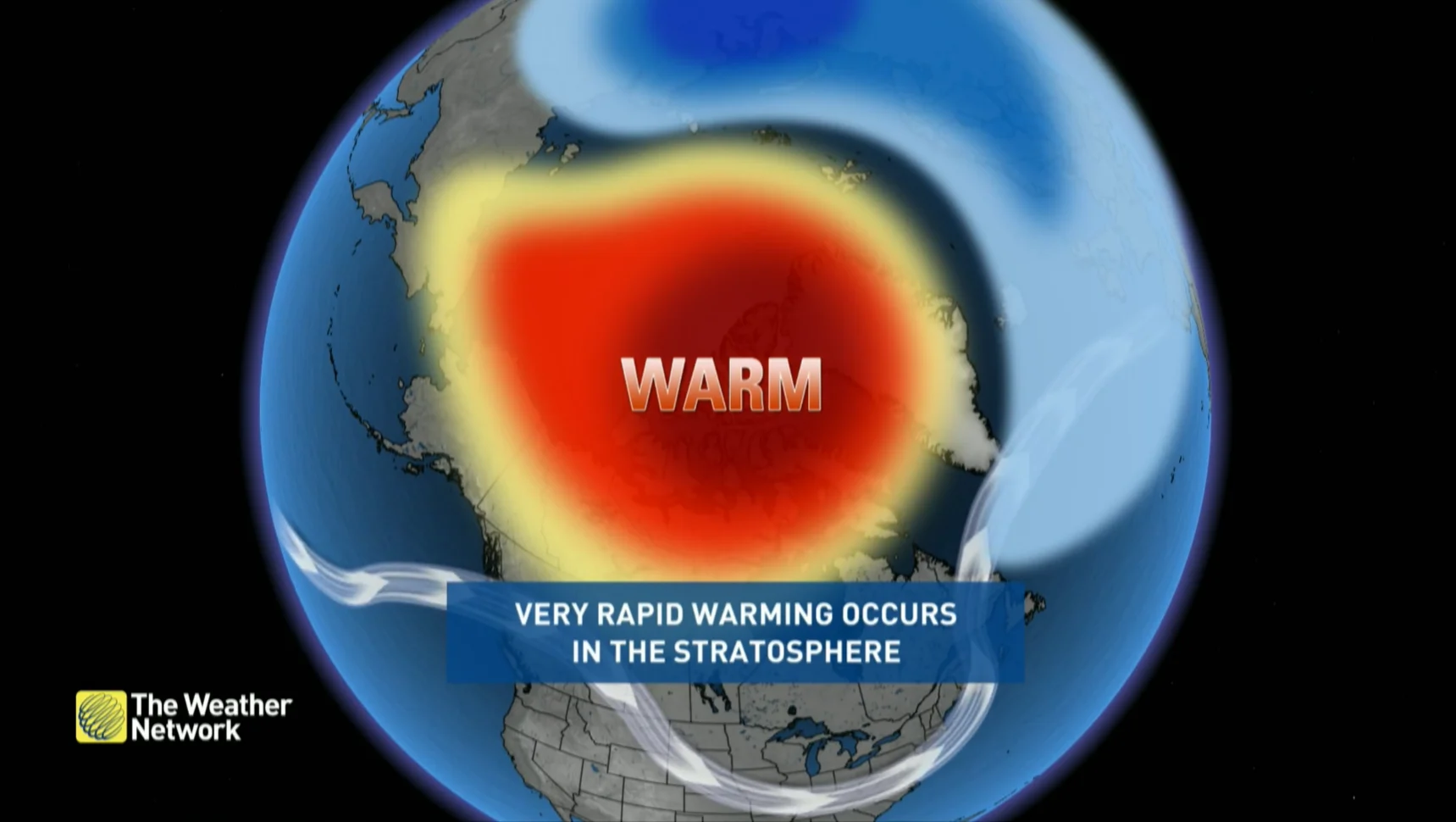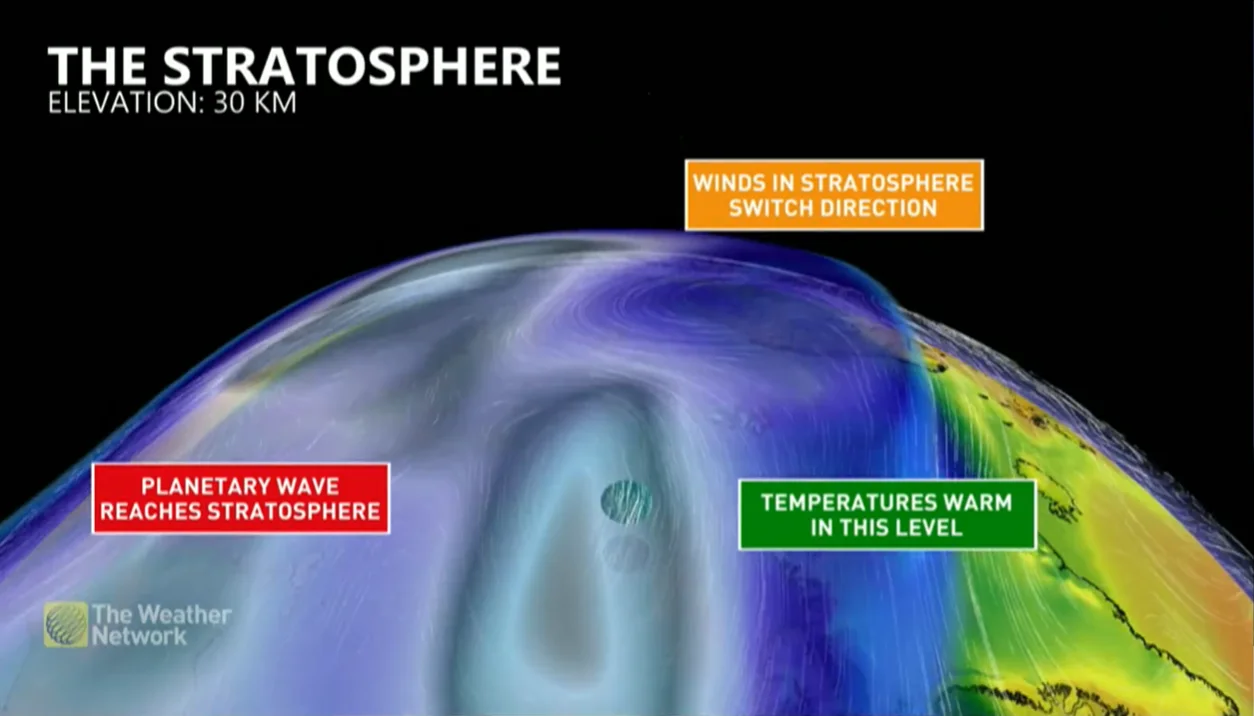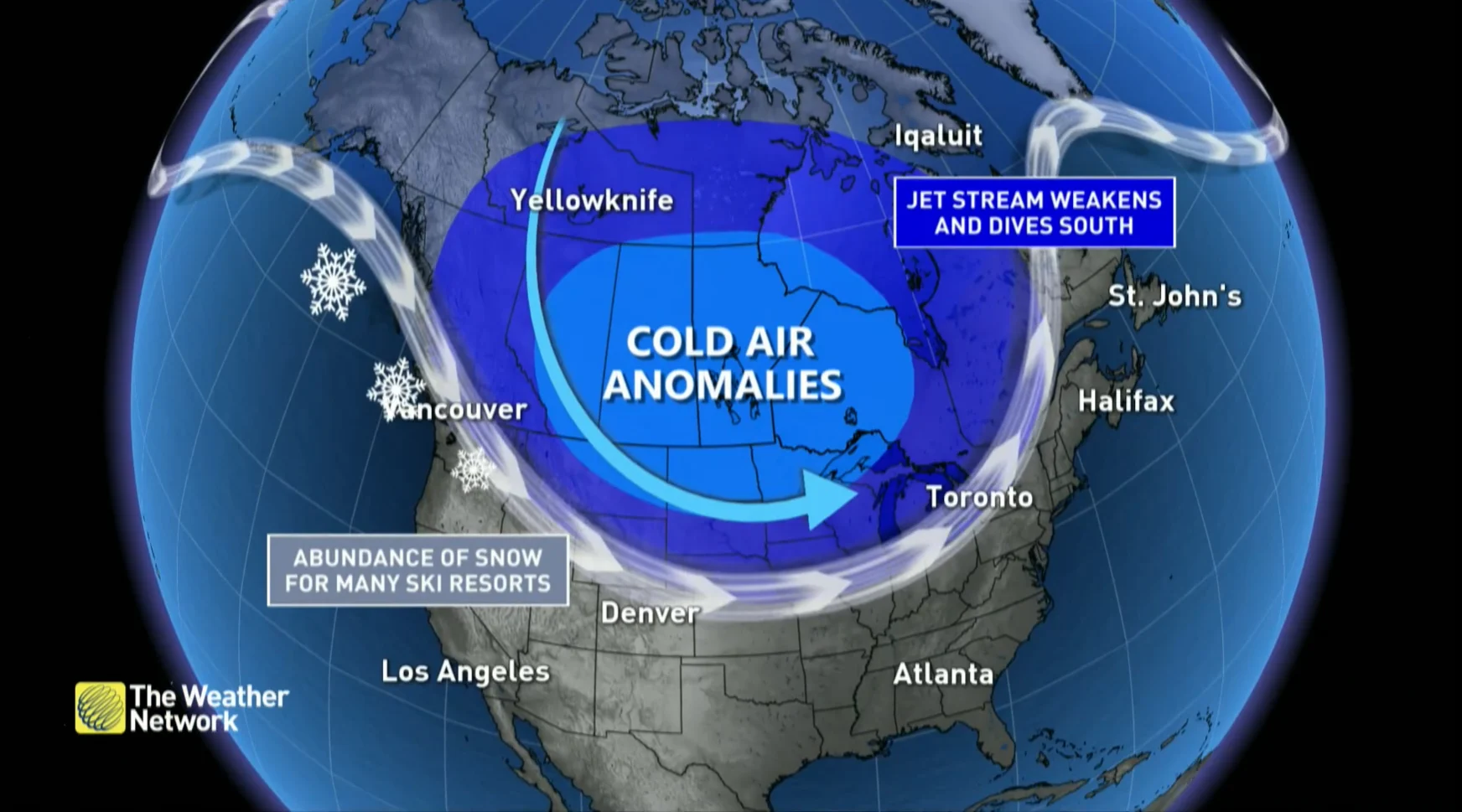
Could a sudden North Pole warmup prolong Canada’s winter weather?
A disruption in the pattern high above the Arctic could have implications for Canada’s weather in the coming weeks.
A major disruption high above the North Pole could affect Canada’s atmospheric fortunes in the coming weeks.
The event is called sudden stratospheric warming, and it might send a chill down the country as we head deeper into March.
DON’T MISS: How vivid thundersnow stole the show in Toronto’s big snowstorm

Strong low-pressure systems rolling across the northern hemisphere don’t just affect weather here at the surface. Those vast storms often extend their influence all the way to the top of the atmosphere, far higher than commercial jets fly.
Every once and a while, these systems can disrupt the upper-level circulations over the highest latitudes of the Arctic. This upheaval causes the winds to switch direction, allowing the stratosphere—a layer about 30 km above the surface—to dramatically warm up.
This is called sudden stratospheric warming (SSW), and it can set off a chain reaction that potentially affects our weather in the weeks that follow.
MUST SEE: Jet streams can bring Canada wild winters and steamy summers

A SSW event can go on to disrupt the polar vortex, a feature that’s gotten plenty of attention of its own over the past decade. A polar vortex is a broad upper-level circulation over the far northern latitudes that grows to its peak strength in the winter.
The polar vortex generally keeps the season’s coldest air confined to the Arctic. If that circulation is disrupted and becomes unstable, though, troughs and upper-level lows spun off from the main circulation can send those frigid temperatures plummeting toward lower latitudes—often including the most populated parts of Canada.

READ MORE: Here’s what we recommend to make the absolute best of your March Break:
It takes a while for a SSW event to have a noticeable influence at the surface, so it’s not going to portend an immediate change in conditions across much of Canada.
Each bout of SSW is different and has variable effects on the weather downstream. However, the potential exists that recent SSW events could send colder-than-normal temperatures plunging southward just as we’re looking forward to tastes of spring.
Winter weather isn’t finished yet. After all, March and April remain chilly and snowy months across the country. Don’t rush to put away those heavy coats or shovels just yet.
